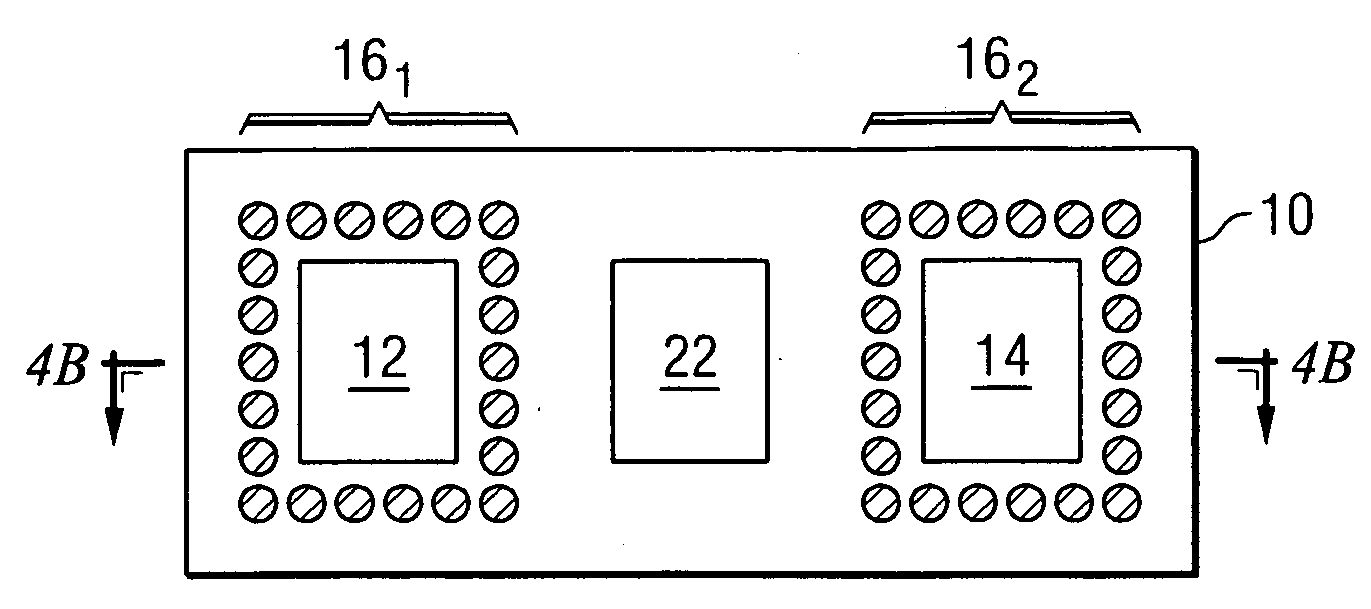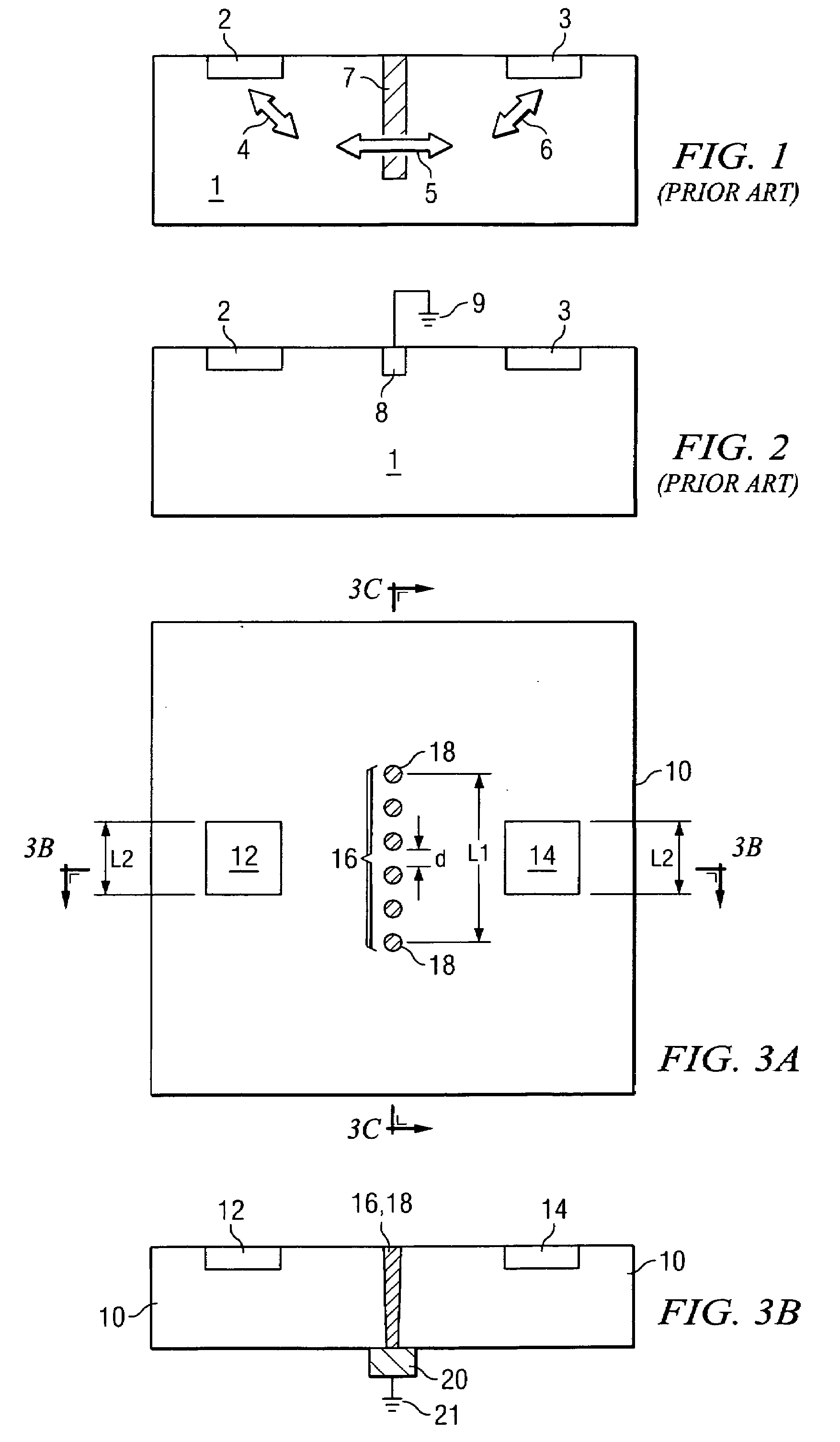Electromagnetic shielding using through-silicon vias
a technology of silicon vias and electromagnetic shielding, which is applied in the direction of semiconductor devices, semiconductor/solid-state device details, electrical apparatus, etc., can solve the problems of high noise coupling between the integrated circuit and the analog circuit, limiting the performance of the analog circuit, and easy to affect the noise generated in the analog circuit. achieve the effect of better electromagnetic isolation
- Summary
- Abstract
- Description
- Claims
- Application Information
AI Technical Summary
Benefits of technology
Problems solved by technology
Method used
Image
Examples
first embodiment
[0024]FIG. 3A illustrates a top view of the present invention. A semiconductor substrate 10 includes a first circuit region 12 and a second circuit region 14, wherein at least one of the circuit regions 12 and 14 includes devices that are sensitive to electromagnetic (EM) noise. Regions 12 and 14 are thus preferably isolated from each other. In the preferred embodiment, one of the circuit regions 12 and 14 is an analog region, while the other is a digital region. Alternatively, circuit regions 12 and 14 are either both analog regions, both digital regions, or compound regions that include both analog and digital circuits.
[0025]An EM isolation structure 16 is formed in substrate 10 in a direct path between circuit regions 12 and 14. In the preferred embodiment, EM isolation structure 16 comprises at least one through-silicon via 18, also sometimes referred to as a through-wafer via or a through-substrate via in the art. Through-silicon vias are vias that extend from the top surface o...
second embodiment
[0030]FIGS. 4A through 4D illustrate a Referring to FIG. 4A, EM isolation structure 16 includes an EM isolation structure 161 encircling circuit region 12. To achieve better results, another EM isolation structure 162 may be formed to encircle circuit region 14. Furthermore, a circuit region 22 may be formed. Circuit region 22 is not encircled by any EM isolation structure. However, since the EM noise generated by circuit regions 12 and 14 is isolated by the respective isolation structures 161 and 162, circuit regions 12, 14 and 22 are still substantially protected from EM interference with each other.
[0031]FIG. 4B illustrates a cross-sectional view of the structure shown in FIG. 4A, wherein the cross-sectional view is taken along a line 4B-4B. Preferably, backside conductive layer 20 is formed and electrically connected to through-silicon vias 18 in isolation structures 161 and 162. Therefore, the EM interference from the sides and the bottom of circuit regions 12 and 14 are signi...
PUM
 Login to View More
Login to View More Abstract
Description
Claims
Application Information
 Login to View More
Login to View More - R&D
- Intellectual Property
- Life Sciences
- Materials
- Tech Scout
- Unparalleled Data Quality
- Higher Quality Content
- 60% Fewer Hallucinations
Browse by: Latest US Patents, China's latest patents, Technical Efficacy Thesaurus, Application Domain, Technology Topic, Popular Technical Reports.
© 2025 PatSnap. All rights reserved.Legal|Privacy policy|Modern Slavery Act Transparency Statement|Sitemap|About US| Contact US: help@patsnap.com



